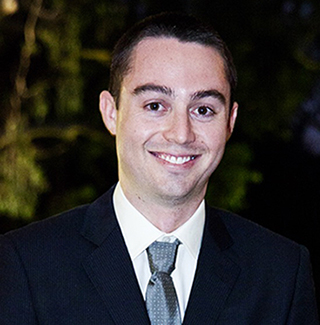UWA and me

My time at UWA had a significant impact on my career and personal life. I met many great friends and mentors with whom I am still in contact. My first experience working with stem cells to develop new treatments for disease was at UWA, and it was pivotal to my decision to pursue this research as a career. I maintain strong ties with the University, particularly in areas involved with stem cell, regenerative medicine and tissue engineering. I hope to return one day and continue research with world-class UWA collaborators.
Developing an interest in lung research
During my postgraduate research training I spent a lot of time with hospital patients and developed an understanding of the tremendous medical needs of preterm infants with lung injury and disease. This experience made me determined to perform and translate my research into new treatments that would directly help patients.
I developed a method to isolate a stem cell population from placental tissue that is usually discarded after birth. This became a safe and ethical stem cell source that could be immediately used to prevent the onset of lung injury and disease in infants. My studies demonstrated that these placental stem cells could effectively prevent both immediate and long-term lung injury.
We are currently performing a Phase I clinical trial to prevent lung injury in preterm infants. Our first patient was treated with these cells in late 2015 and is currently of good health. We hope to expand this treatment in the near future to adult patients with debilitating and fatal lung diseases such as cystic fibrosis (CF).
I received world-class scientific training from Dr Anthony Atala at the Wake Forest Institute for Regenerative Medicine. Dr Atala’s mentorship provided me with many new skills and capabilities, but, most importantly, reinforced the need for our work to be rapidly translated to the clinic. For patients where early intervention is not possible, such as those with end stage lung disease, there are few treatment options other than major organ transplantation. To overcome this challenge, we are developing strategies for tissue-engineered airways, and drug treatment through disease modelling. Our research involves the use of 3D bio-printing to fabricate patient-matched, living airway tissue for transplantation. We have also developed miniature lung organoids, also called “lungs-on-a-chip”, which can be used to study different kinds of lung disease.
New therapies for lung disease
My research in developing new therapies for lung disease targets both ends of the disease spectrum: first trying to prevent disease from occurring; but restoring and regenerating lung function in patients with end-stage disease. Lung diseases such as bronchopulmonary dysplasia and cystic fibrosis are often diagnosed before, or shortly after birth, so an effective therapeutic intervention at an early stage could stop the progression of the disease. Perinatal cells, derived from perinatal tissue such as amniotic fluid, placenta and placental membranes, are the key to effective treatment for these types of lung diseases.
Future of pulmonary regenerative medicine
I think that future pulmonary regenerative medicine will focus on patient-specific treatments. Rather than simply prescribing therapies based on historical experience, each patient will undergo a personalised diagnosis that takes into account their genetics, stem cells and disease state and provides an optimised treatment for them. This may involve technology such as whole genome sequencing, “disease-in-a-dish” approaches for high volume screening and evaluation of potential therapies, and the use of stem cells and 3D bio-printing to fabricate patient-matched tissues and organs for transplantation. Our research focuses on translating scientific discovery into clinical therapies. Our team was the first in the world to engineer laboratory-grown organs that were successfully implanted into humans. Today we are continuing our work to engineer more than 30 different replacement tissues and organs and to develop healing cell therapies - all with the goal to cure, rather than merely treat, disease.
About Sean
Sean grew up in Mandurah, Western Australia. He studied molecular biology and genetics at UWA, and gained an interest in medical research which spurred him to move to Melbourne to pursue a PhD in stem cell research, focussing on new treatments for preterm infants that develop lung injury and disease. He has been living in Winston-Salem for the past five years, and is currently an Assistant Professor at the Institute for Regenerative Medicine at the Wake Forest Baptist Medical Center.